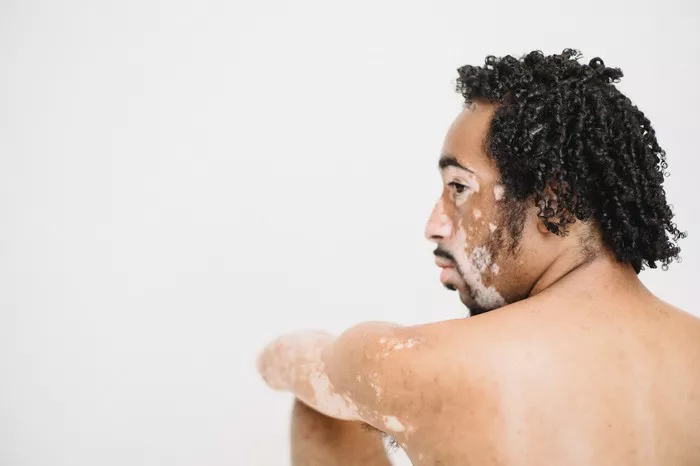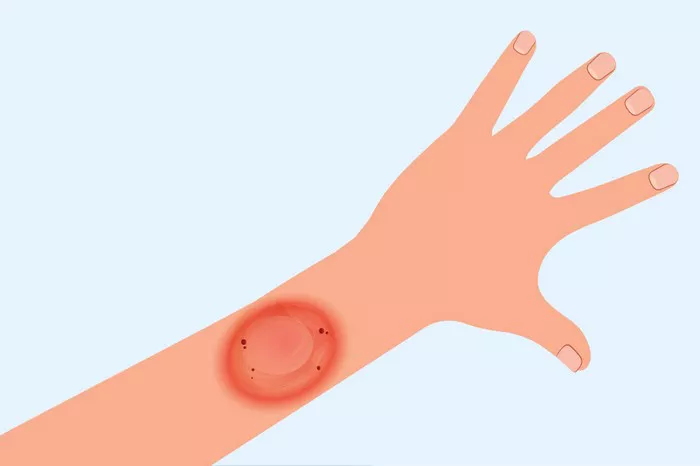Vitiligo is a skin condition characterized by the loss of pigment, leading to white patches on various parts of the body. It affects individuals of all skin types but is more noticeable in those with darker skin tones. While the primary concern for most people with vitiligo is cosmetic, questions often arise regarding the physical sensations associated with the condition. One common query is whether vitiligo causes itching when it begins. This article aims to delve into this question, providing a comprehensive understanding based on medical research and clinical observations.
Understanding Vitiligo
Vitiligo occurs when the melanocytes, the cells responsible for producing melanin (the pigment that gives skin its color), are destroyed or stop functioning. The exact cause of vitiligo is still unknown, but it is believed to be an autoimmune disorder. In such disorders, the body’s immune system mistakenly attacks its own cells. Other theories suggest genetic factors, environmental triggers, or a combination of these elements.
There are two main types of vitiligo:
- Non-segmental Vitiligo: The most common form, characterized by symmetrical white patches on both sides of the body.
- Segmental Vitiligo: This type tends to appear on one side of the body and usually progresses for a few years before stopping.
Vitiligo can affect any part of the body, including the skin, hair, and mucous membranes (such as the inside of the mouth and nose).
Symptoms and Diagnosis of Vitiligo
The primary symptom of vitiligo is the appearance of white patches on the skin. These patches are more noticeable in sun-exposed areas, such as the face, hands, arms, feet, and lips. Additionally, people with vitiligo might experience premature graying of the hair on the scalp, eyelashes, eyebrows, or beard. In some cases, the condition can affect the color of the mucous membranes inside the mouth and nose.
Diagnosing vitiligo typically involves:
1. Medical History and Physical Examination: A healthcare provider will inquire about the patient’s medical history, family history of vitiligo, or autoimmune conditions and inspect the skin patches.
2. Wood’s Lamp Examination: Under ultraviolet (UV) light, areas affected by vitiligo appear differently than unaffected skin.
3. Skin Biopsy and Blood Tests: Occasionally, a small sample of the skin might be taken for further examination, and blood tests may be done to check for autoimmune conditions.
Does Vitiligo Itch?
The Onset of Vitiligo and Sensory Symptoms
Vitiligo itself is generally not painful, and most people do not report itching as a predominant symptom. However, some individuals with vitiligo do experience itching or a burning sensation when the condition first appears or when new patches develop. This itching is not a universal symptom and varies from person to person.
Possible Reasons for Itching in Vitiligo
1. Autoimmune Reaction: Since vitiligo is believed to be an autoimmune disorder, the itching might result from the immune system’s attack on melanocytes. This immune response could lead to localized skin inflammation, causing itching.
2. Inflammation: Inflammation often accompanies the destruction of melanocytes, and this inflammatory response might contribute to itching sensations. Inflammatory cells release certain chemicals, like cytokines and histamines, that can cause itching.
3. Environmental Factors: External factors such as sun exposure, dry skin, or contact with certain chemicals can exacerbate itching. People with vitiligo may be more sensitive to these factors, especially in newly affected areas.
4. Psychological Factors: Stress and anxiety, which are common in individuals diagnosed with vitiligo, can also lead to or worsen itching. The psychological impact of the visible changes in the skin can contribute to psychosomatic itching.
5. Associated Skin Conditions: Sometimes, itching in people with vitiligo can be due to other co-existing skin conditions like eczema or psoriasis, which can cause pruritus (itching) independently of vitiligo.
Clinical Observations and Studies
Several studies and clinical observations provide insights into the relationship between vitiligo and itching. For instance, a study published in the Journal of the European Academy of Dermatology and Venereology found that about 20-30% of vitiligo patients reported itching at the onset of the condition or in areas where new patches were developing. This study indicates that while not all patients experience itching, a significant minority do.
In another study, researchers observed that itching was more common in vitiligo patients with a recent onset of the disease and those with active, spreading vitiligo. This suggests that the activity level of the condition might influence the likelihood of itching.
SEE ALSO: Can Vitiligo Be Cured by Plastic Surgery?
Managing Itching in Vitiligo
For those who do experience itching with vitiligo, several management strategies can help alleviate this symptom:
Topical Treatments
1. Corticosteroids: Topical corticosteroids can reduce inflammation and itching. They are often prescribed for their immunosuppressive and anti-inflammatory properties.
2. Calcineurin Inhibitors: These non-steroidal topical medications, such as tacrolimus and pimecrolimus, can help reduce immune system activity and are often used to manage itching in inflammatory skin conditions.
3. Moisturizers: Keeping the skin well-hydrated can help reduce dryness and itching. Using emollients and moisturizers regularly can provide relief.
Phototherapy
Phototherapy, particularly narrowband UVB (nbUVB) treatment, is commonly used to manage vitiligo. While its primary purpose is to stimulate repigmentation, it can also help reduce inflammation and itching.
Antihistamines
For some individuals, oral antihistamines can be effective in managing itching. These medications block the action of histamines, which are chemicals released during inflammatory responses that can cause itching.
Stress Management
Given the link between stress and itching, techniques to manage stress, such as mindfulness, meditation, and cognitive-behavioral therapy (CBT), can be beneficial. Reducing stress can help diminish psychosomatic itching and improve overall quality of life for vitiligo patients.
Protecting the Skin
Since external factors like sun exposure can exacerbate itching, it is crucial for individuals with vitiligo to protect their skin. Using sunscreen, wearing protective clothing, and avoiding harsh skin care products can help minimize irritation and itching.
Conclusion
In summary, while vitiligo primarily affects the appearance of the skin through the loss of pigment, itching can occur in some individuals, particularly at the onset of the condition or during the development of new patches. The itching associated with vitiligo is not universal and can result from various factors, including immune responses, inflammation, environmental triggers, psychological stress, and co-existing skin conditions.
Understanding the nuances of vitiligo and its potential symptoms, such as itching, is essential for effective management and improving the quality of life for those affected by this condition. Through a combination of topical treatments, phototherapy, antihistamines, stress management, and protective measures, individuals with vitiligo can find relief from itching and better cope with the challenges posed by this skin condition. Further research and clinical observations will continue to shed light on the complex nature of vitiligo and the best practices for managing its symptoms.
Related Topics:


























